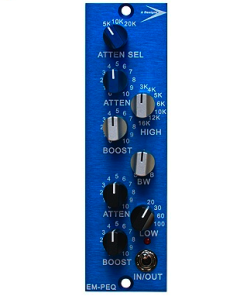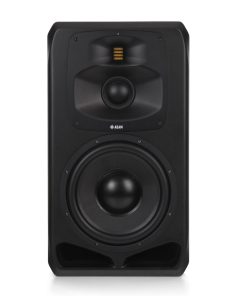Black Lion Audio Micro Clock MKII Black Lion Audio
$ 299,00 $ 119,60
The Micro Clock MKII is a simple, yet elegant design in external clocking. It features ultra-low jitter, third order crystal oscillators with a high current parallel drive circuit designed to maintain harmonic content of the signal regardless of loading conditions. In addition to this, proprietary noise reduction circuitry dramatically eliminates unwanted switching harmonics normally found in digital signals. The Micro Clock MKII is one of the best performing external word clocks in the pro audio market today.
When we introduced the Micro Clock MKII, we didn’t anticipate the amount of demand and controversy that managed to accompany it. External clocking is certainly a hot button issue. Some folks maintain that there’s no basis for it; that it’s a sort of modern “emperor’s new clothes.” The reasoning behind this is that the device being clocked externally will simply filter the incoming clock signal through its phase locked loop, thereby eliminating any sort of benefit associated with the superior clock. In addition, the simple act of accepting the incoming signal and creating a new signal that’s in phase will add some jitter.
The biggest problem with this theory is that we know nothing about the PLL filter in question; it’s completely hypothetical. Many PLL’s in pro audio are designed to filter out unwanted signals that are outside of the desired bandwidth, although some are configured to filter out unwanted harmonics that lie within the signal’s frequency band. It’s incredibly rare to find one that does both at the same time. In the case of the Micro Clock MKII, it outputs a high bandwidth signal that is rare to find in internal clocks. Whether or not an external word clock can improve the sound quality of a receiving device is completely dependent on how the receiving device accepts an external word clock signal, and is dependant on the quality of the receiving device’s internal clock. It’s best to do an A/B listening comparison to know whether the external clock is making a positive impact on the sound or not.
The Micro Clock MKII is simple and probably even boring looking by most standards. It’s housed in a rugged 3” x 4” chassis that provides optimum RF shielding. It has no lights, no frequency display, and none of the usual visual candy that your friends might envy. However, for a modest black box, it does its job incredibly well and at a price that’s unheard of for this level of performance!
It features six selectable output frequencies from 44.1 kHz on up to 192 kHz. The output level is approximately 5 volts peak to peak. Jitter at the crystal oscillator is approximately 1 picosecond RMS, and just under 10 picoseconds RMS at the output. The power supply is a 9 volt DC wall wart that’s capable of accepting both 120 and 240 volts AC. The clock is compatible with all modern digital devices that have 75 ohm BNC word clock inputs.
FEATURES
- Output: 3 BNC with fixed 75 ohm terminations @ 5 volts peak to peak
- Power: 9 volts DC
- Sampling rates: Six selectable rates, 44.1 kHz-192 kHz (44.1, 48, 88.2, 96, 176.4, 192)
- Jitter: Less than 10 picoseconds of accumulated jitter measured using a delta sigma averaging method
Prompt Delivery and Professional Packaging
Our long-standing partnership with UPS FedEx DHL and other global carriers lets us offer a range of shipping services. Our warehouse staff is extremely skilled and will package your items according to our precise and exact specifications. Your goods will undergo an extensive inspection and be safely packaged prior to being sent out. Each day, we ship to thousands of customers in many countries. The fact that we are committed to becoming the biggest online retailer in the World is clear. These warehouses are in Europe in the same way as they are in USA.
Note: Orders that include more than one item are assigned a processing period depending on the item.
Before shipping, we will inspect thoroughly the items you have ordered. Most orders are shipped within 48 hours. Expected delivery time is between 3-7 days.
Returns
Stock is dynamic. It's not entirely managed by us since we are involved with multiple entities, including the factory and the storage. The actual stock can change at any moment. It is possible that your order may be out of stock once the order has been placed.
Our policy lasts for 30 days. We cannot exchange or refund your order if it has been 30 days from the date of purchase.
For your item to be returned it must be in its original packaging, unopened and in the condition you received it. The item must be in its original packaging.
Related products
Accessories
500 Series
Microphones
Recording Equipments
Recording Equipments
Monitor
Accessories
Microphones
Monitor Systems
Microphones
Subwoofer
Microphones
Recording Equipments
Microphones
Monitor
Accessories
Mic Preamp
Monitor Systems
Equalizers
Monitor Systems
Recording Equipments
Mic Preamp
Recording Equipments
Headphones
Monitor Systems


































































